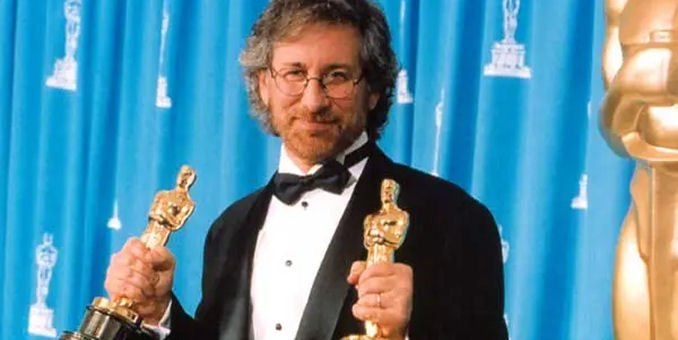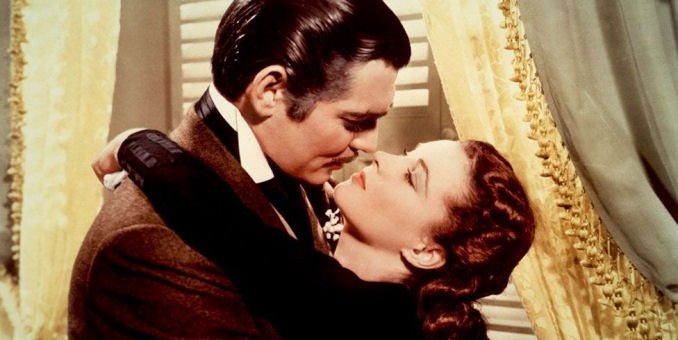
For most filmmakers, the only way to get an Academy Award is to work hard and hopefully create some work that catches the eyes of the voting member of the Academy of Motion Picture Arts and Sciences. But for some with deep pockets, there is a simpler solution – buy an Oscar statue at auction.
Oscar statues are always a centerpiece of any Hollywood memorabilia auction they appear in, not only for the prestige of having one going up on the block, but for the high prices they can command. A six-or-seven digit sale makes a great headline. But of course, the Academy is not very happy about such sales and will do all that they can to stop them. However, in certain situations, there is not much that they can do about it. In other situations, there is plenty that they can so about it.
The Academy is very strict in regards to the Academy Award as copyrighted property and a registered trademark of the organization. As such, in 1950 the Academy decided that in order to protect the integrity of the Academy Award statuette, any Oscars awarded from that year forward could not be put up for sale without first offering to sell it back to the Academy for the princely sum of $1. It is codified into the rules for the Academy Awards and any person who wins an Oscar statute has to sign an agreement to comply with these rules. The rule also applies to any Oscars awarded to a person before 1950 if that person were to win another Oscar after 1950.
Currently the rule reads as –
Academy Award winners have no rights whatsoever in the Academy copyright or goodwill in the Oscar statuette or in its trademark and service mark registrations. Award winners must comply with these rules and regulations. Award winners shall not sell or otherwise dispose of the Oscar statuette, nor permit it to be sold or disposed of by operation of law, without first offering to sell it to the Academy for the sum of $1.00. This provision shall apply also to the heirs and assigns of Academy Award winners who may acquire a statuette by gift or bequest.
The Academy considers their Rules about receiving an Academy Award statuette a binding contract. But interestingly enough, several contract lawyers over the years have ventured that if this were a binding contract between the Academy and the Oscar recipient, there is no penalty stipulated for if the winner were to try and break the contract and sell a post-1950 Academy Award at auction. Given the litigious zeal with which the Academy often reacts with even when a pre-1950 Oscar goes up on the block, it is no surprise that post-1950 statuettes are sold privately, with no fanfare or publicity whatsoever. But it is also surprising that no one has actually attempted to push back one the rule in a very public way either.
Still, several pre-1950s Oscars that escape all the clauses in the Academy’s rules have gone under the hammer over the years. It is estimated that at least 200 Academy Awards have left the possession of their winners or heirs and have found their ways to collectors’ hands, some of which may very well be post-1950 Oscars. Often these collectors are anonymous. One such Switzerland-based collector is alleged to have several Academy Awards, including the 1951 Best Picture statuette for An American In Paris.
GONE WITH THE WIND’s Best Picture Statue
Perhaps the first of the big price tag Academy Award sale was when Michael Jackson bought the Best Picture Oscar awarded for the 1939 film Gone with the Wind. The King of Pop paid out the princely sum of $1.54 million for the statuette after some reported spirited phone bidding with another party that drove the price up. (The auction house estimated it would have brought in in the vicinity of $300,000.) The sale was just one item in a Sotheby’s of London auction of memorabilia from the ten-time Oscar winning film including one of 27 identical screen-worn dresses worn by Vivien Leigh for her role as Scarlett O’Hara which went for $90,500 and actor Clark Gable’s copy of the film’s script with handwritten margin notes for variations on the famous “Frankly my dear I don’t give a damn” line sold for $46,000.
The story of the Gone With The Wind Academy Award statue doesn’t end there however. Although Jackson died in 2009, it wasn’t until an inventory of estate was done in 2016 that it was discovered that the Oscar was missing. No one was sure if the singer had kept the Oscar at his Neverland estate near Ojai, California, his Los Angeles home where he was living when he died, or if it was in storage somewhere. Wherever it was, it wasn’t there in 2916. And even today, it is unknown if a family member took the Oscar, it was stolen sometime after Jackson’s death, or is still hidden somewhere in storage waiting to be found. But if it was stolen, it would be hard to fence or sell, given it being one of the most high profile Oscar statues of all time.
Other High Profile Academy Award Sales

Here are a few of the more high profile Academy Awards statues that have been sold over the years.
One of the first higher profile Academy Award sales was in 1992, when Harold Russell Oscar placed his Best Supporting Oscar for his work in Best Years of Our Lives (1946) onto the auction block. The Oscar sold to a private collector for $60,500, which the actor used to pay towards his wife’s medical bills. When he received criticism for selling his Oscar, he merely replied, “I don’t know why anybody would be critical. My wife’s health is much more important than sentimental reasons. The movie will be here, even if Oscar isn’t.”
But one of the first big money Academy Award sales came a year later when the Best Actress Oscar won by Vivien Leigh for her performance as Scarlett O’Hara in Gone With The Wind was sold at auction for $510,000. From there on out, Oscars were almost always a big ticket item.
Noted magician David Copperfield purchased director Michael Curtiz’s 1943 Oscar statue for the classic Casablanca in 2003 for the sum of $232,000. However, in June 2012 he put the Academy Award back out for sale, where it earned just over $2 million, besting the record price that Michael Jackson paid for his Gone With The Wind Best Picture statuette. Still, that was an amount below what auction house Nate Sanders had estimated it would have sold for.
A few months after Copperfield sold his Casablanca Oscar, the Best Actress Academy Award that Joan Crawford won for her performance in the 1945 film Mildred Pierce sold at auction for $426,732.
But the biggest Oscar statue sale held in 2012 was a few months earlier, in February. At behest of an anonymous “Los Angeles-area businessman with ties to the entertainment industry,” Nate Sanders auction house placed a whopping fifteen Academy Awards onto their auction block.
Among the statues up for auction were Norman Taurog’s Best Direction award for Skippy, the Best Picture trophy awarded to Fox Films for Cavalcade (1933), the Best Cinematography award won by Wuthering Heights (1939), Herman Mankiewicz’s Academy Award for co-writing Citizen Kane, the Best Picture Oscar for John Ford’s How Green Was My Valley (1941), the first Best Supporting Actor Oscar awarded which was won by Charles Coburn for The More The Merrier (1943), Daniel Mandell’s Best Editing award for The Best Years Of Our Lives (1946), Hugo Friedhofer’s Best Music award for The Best Years Of Our Lives, Paul Groesse’s Best Color Art Direction for The Yearling (1946), the Best Cinematography Oscar awarded to The Yearling, Ronald Colman’s Best Actor trophy for A Double Life (1947) and the 1949 Best Picture Oscar for MGM’s Little Women. Also in the Oscar lot were three awards given to pioneering special effects technician Farciot Edouart – a bronze tablet “Scientific or Technical Award” from the Academy for creating the Dual Screen Transparency Setup, as well as regular Oscars for “Outstanding Transparency Special Effects” for 1938’s Spawn Of The North (the first Academy Award presented for special effects) and 1942’s Reap The Wild Wind.
Although the auction house estimated that the Oscars could bring upwards of $4 million in sales, the final tally was just over $3 million.
In December 2018, auction house Profiles In History put up on the block two Best Picture Oscar statues – the ones for 1935’s Mutiny On The Bounty and 1947’s Gentleman’s Agreement. Mutiny On The Bounty‘s Academy Award pulled in $240,000 which was reportedly around the auction house expected it to make. When the hammer fell on the Gentleman’s Agreement Oscar, the winning bid was $492,000, a figure that was more than twice what was expected. Both Oscar statues buyers were anonymous. A third Academy Award, Hans Dreier’s Oscar for Art Direction for 1950′s Sunset Boulevard, was also up for auction at this sale, though no selling price was reported at the time.
Sometimes, even Oscars that were awarded to films that haven’t stayed in the public’s memory can still a command a decent price. In April 2013, the Academy Award won by screenwriter Charles MacArthur for co-writing The Scoundrel (1935) sold for $106,231. (MacArthur co-wrote the film with his sometime collaborator playwright Ben Hecht.) What’s more interesting, though, is that the Oscar was not in pristine condition. According to Deadline, it was “tarnished and had a cracked head and base as well as visible repair done to a break at the ankles.”
Robert Osborne was not only the original host for Turner Classic Movies, but was also a film scholar and collector. When he passed away in 2017, he left the Oscar awarded to art director Richard Day for 1935’s The Dark Angel as part of his estate. It was unknown how he acquired the Academy Award, though it is possible he bought it privately. The Oscar was sold by his two nieces who control the estate in 2019, going to an anonymous collector for $50,000, as part of an auction of numerous pieces of his film memorabilia.
Steven Spielberg, Raider of the Auctioned Oscar

But not all Academy Award sales move statuettes into collectors hands. Steven Spielberg has been known to bid on Oscar statues when they come to auction. It is not like the director needs them for himself. He has three Oscar wins out of eight nominations. What he does is occasionally bid on auctioned Oscars in order to return them back to the Academy. He first did this in 1996 when Clark Gable’s Best Actor statuette for 1934’s It Happened One Night for $607,000 was up for sale. In 2001, he acquired Bette Davis’ Oscar for her work in 1938’s Jezebel for $578,000 from a Christie’s auction. He also doled out $207,500 to acquire Davis’s other Academy Award, won for 1935’s Dangerous, in order to return it to the Academy.
His reasoning is simple, as he explained in 1196 after purchasing Gable’s Oscar – “The Oscar statuette is the most personal recognition of good work our industry can ever bestow, and it strikes me as a sad sign of our times that this icon could be confused with a commercial treasure.”
Or perhaps as a certain fedora-wearing, whip-cracking character of Spielberg’s might say, “It belongs in (the Academy’s) museum!”





